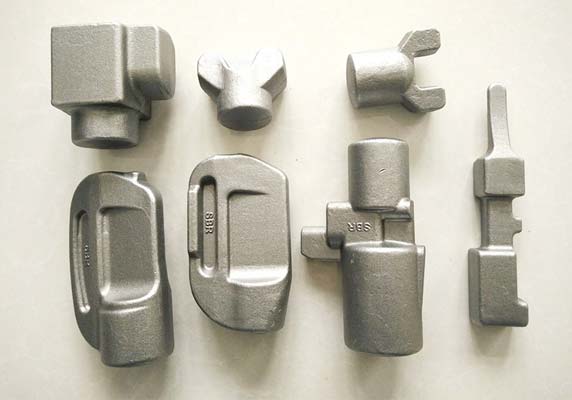- Contact Innally, Let you purchase forgings in China more favorable prices, products more assured!
- Hotline:+(86)15038323776 Email:innally@innally.com
How to prevent the common defects of forklift parts forgings?
- Category: Stainless steel forging, Thermal forging
- |
- Date: 04/12/2023
the prevention of the common defects of forklift parts need to start from many aspects. By optimizing the heating process, controlling the forging speed and pressure, choosing the right mold and lubricant, strengthening the cooling control, strict quality control and testing, and training operators and other measures, we can effectively reduce the incidence of forging defects, improve the quality and performance of forgings, thus ensuring the safety and reliability of forklifts.
Product Details
The quality of forgings is one of the key factors to ensure the normal operation and service life of forklift. However, in the forging process, there are often some common defects, such as cracks, bubbles, inclusions and so on. These defects not only affect the appearance and performance of forgings, but also may pose a potential threat to the safety of forklifts. To prevent these common defects, we can take the following steps:
First, optimize the heating process
Heating is one of the important links in forging process. In order to prevent defects such as cracks in forgings, we need to optimize the heating process. Specifically, the heating temperature and heating speed should be controlled to ensure that the metal can be uniformly heated to avoid temperature gradients and thermal stress.
- Control forging speed and pressure
Forging speed and pressure are important factors affecting forging quality. Too fast forging speed or too large forging pressure may lead to metal flow line fracture, resulting in cracks and other defects. Therefore, in the forging process, we should control the forging speed and pressure to ensure that the metal can fully flow and fill the mold, while avoiding excessive stress.

Third, choose the right mold and lubricant
The shape and dimensional accuracy of the die have an important influence on the shape and dimensional accuracy of the forging. In order to avoid defects such as incomplete shape or dimensional deviation of forging parts, we should choose the right mold and ensure that the dimensional accuracy and surface quality of the mold meet the requirements. In addition, the use of lubricants in the forging process can reduce the friction between the metal and the mold, thereby reducing the surface roughness of the forging and the wear of the mold.
Fourth, strengthen cooling control
The cooling rate is one of the important factors affecting the structure and performance of forging. In order to avoid defects such as cracks or uneven organization in forging parts, we should strengthen cooling control. Specifically, the appropriate cooling speed and cooling method should be selected according to factors such as the material and thickness of the forgings to ensure that the forgings can be evenly cooled and obtain the required organization and performance.
- Strict quality control and testing
In order to ensure that the quality and performance of the forging meet the requirements, we should establish a strict quality control system and carry out the necessary testing. Through appearance testing, size testing, hardness testing, chemical composition analysis, non-destructive testing and mechanical performance testing and other methods, you can comprehensively evaluate the quality and performance of forging, timely detection and treatment of potential quality problems.
- Train operators and improve their skills
The skill level and operating habits of the operator have an important impact on the quality of the forging. In order to avoid defects caused by improper operation, we should regularly train operators to improve their skill level and quality awareness. Training content should include forging process, mold use, lubricant selection, quality control and other aspects.
To sum up, the prevention of the common defects of forklift parts need to start from many aspects. By optimizing the heating process, controlling the forging speed and pressure, choosing the right mold and lubricant, strengthening the cooling control, strict quality control and testing, and training operators and other measures, we can effectively reduce the incidence of forging defects, improve the quality and performance of forgings, thus ensuring the safety and reliability of forklifts.
nannan
INNALLY website editing, to provide you with forging related information
Related Products
Search
Forging center
- Steel forgings
- Aluminium alloy forging
- Titanium alloy forging
- Stainless steel forging
- Copper forging
- Automotive forgings
- Locomotive forging
- Bicycle forgings
- Motorcycle forging
- Rigging and fasteners
- Bearing forging
- Electric power fittings
- Marine forging
- Mechanical forgings for metalworking
- Mining machinery forgings
- Marine engineering forgings
- Construction machinery forgings
Popular product

© 2025. All Rights Reserved.






